We often best remember the things that break with our expectations of reality. Things that happen outside of our routine are more likely to stick with us–for example, we’re more likely to remember the events of a milestone birthday, compared to what happened on a random, ordinary Wednesday.
This is why subverting expectations is such a great marketing tool. A guerrilla marketing campaign takes this principle to an extreme by hitting us with marketing messages when we least expect it, and making an impression that will last (and hopefully get shared on social media).
Jay Conrad Levinson coined the term “guerrilla marketing” when he used it as the title for his 1984 book on outside-the-box marketing strategies that leveraged the element of the surprise as a tactic for garnering attention. Though the tactics of guerrilla marketing existed before Levinson’s book, the technique has certainly risen in popularity in recent years.
So what makes a great guerrilla campaign?
The most effective guerrilla campaigns have a few key things in common:
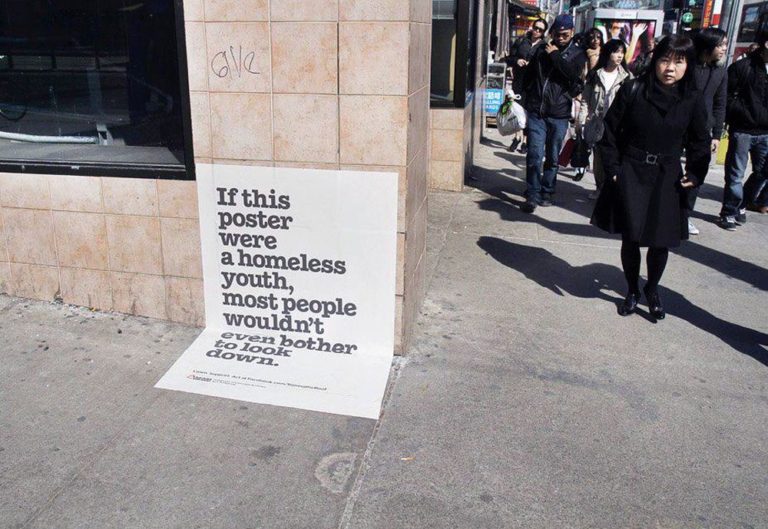
Guerrilla campaigns are often very effective for NGOs, who have important messages, but often small budgets.
Surprise.
The heart of a guerrilla campaign is the element of surprise.
Whether it’s an unexpected use of space, a paradigm shift, or a startling image, guerrilla campaigns unsettle audiences’ routines and thoughts.
The goal is to evoke an emotional reaction–however, experts in guerrilla marketing warn that you shouldn’t attempt to upset, anger, or frighten your audience. The best guerrilla campaigns toe the line between eliciting a strong emotion and eliciting a negative one.
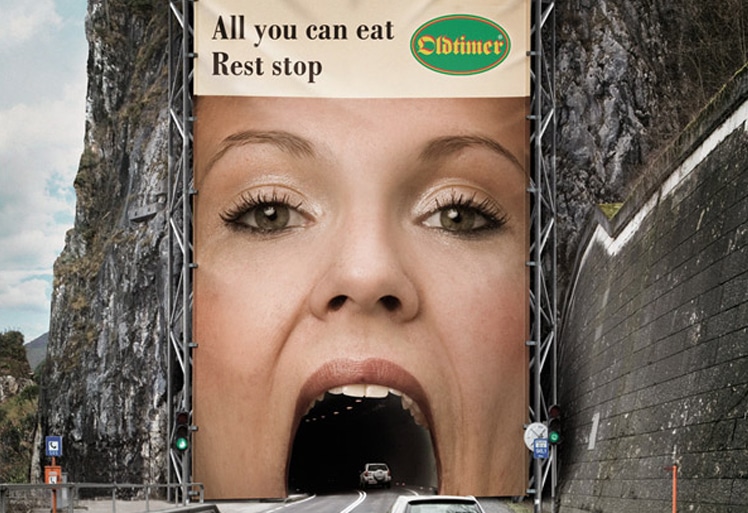
Imagine rounding the curve and seeing this.
Authenticity.
A guerrilla campaign has to be original and align with your brand. Guerrilla marketing must be unexpected, so anything that’s already been done won’t work.
Authenticity requires being original, but it also requires being true to yourself (or, in this case, true to your brand’s self). Check out this Allstate campaign. A car hanging from a parking garage is certainly not something you’d expect to see. Such a sight might even trigger a split second of fear. The campaign capitalizes off these feelings of surprise and shock to create an impression, but it’s also consistent with the brand personality that created Mayhem.
Allstate plays up the stakes of not doing business with them, but always in a humorous way–this particular guerrilla campaign fits beautifully with the rest of their marketing, giving customers a consistent impression of who Allstate is and what they stand for.

A car perched in a seemingly-precarious position on the upper level of a parking garage. A sign below it asks, “Are you in Good Hands?”
Similarly, Coke’s “Happiness Machine” is a wild campaign that delivers memorable surprises, consistent with the brand’s long-time image as a global purveyor of human joy. Coke’s Happiness Machines were placed on college campuses and dispensed not only extra sodas, but flowers, board games, food, and other things to make students smile.
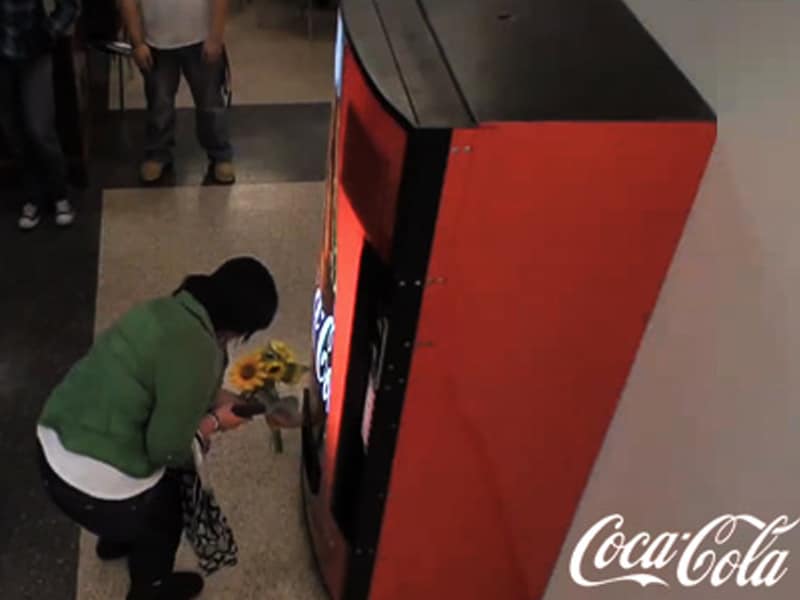
Coke “Happiness Machine” dispensing a bouquet to a student.
Creativity.
Guerrilla campaigns rely on creativity, not a huge budget. Of course, a big budget is relative. For a company like Coca-Cola, the amount of money spent on a guerrilla campaign might seem enormous, but might be a small fraction of their overall marketing budget. Check out the campaigns below….both required few resources and a small budget, but their efficacy stems from their cleverness, unique elements, and ability to surprise.
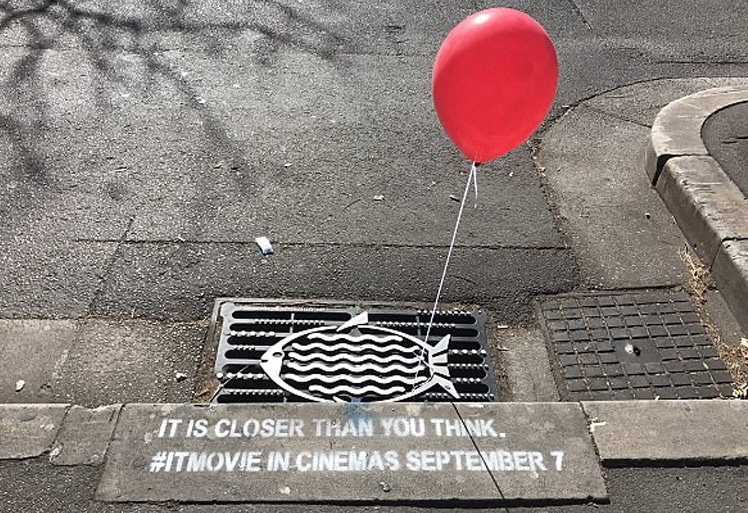
When the It movie came out, one marketing tactic involved simple red balloons in ominous locations with sidewalk chalking. The balloons captured attention and created apprehension – perfect for advertising a horror movie.
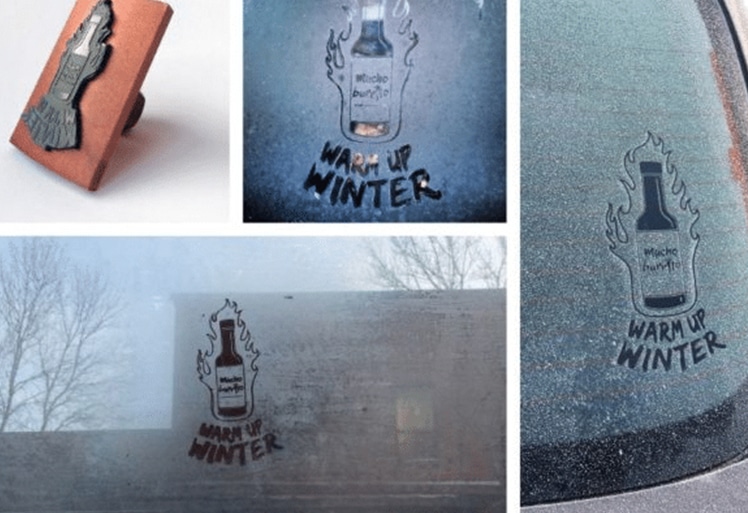
Defrosting your car in the winter isn’t fun, but this Mexican restaurant chain saw the perfect opportunity to spice it up. A custom snow stamp left a temporary mark on windows, but a lasting impression on the people who saw it.
The right location.
A good guerrilla campaign capitalizes on the environment.
That might mean a tactic that takes into account the time of day when the area will be busiest. Or it could mean taking the everyday elements of the space and using them to create surprising, striking, or funny images.
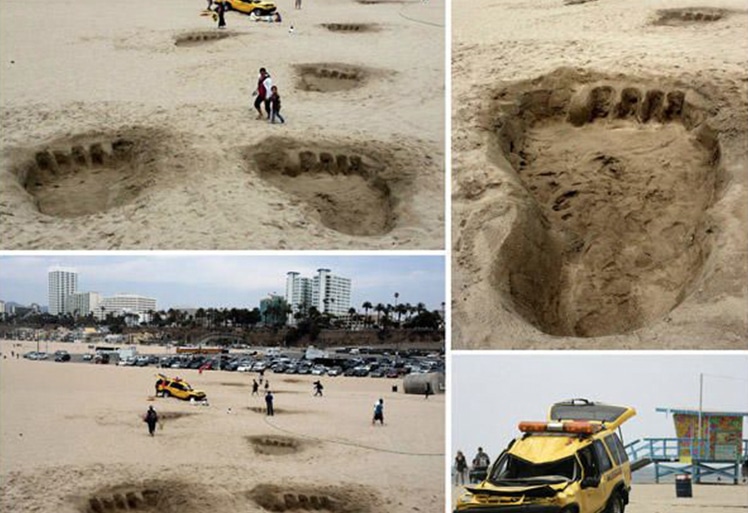
In this guerrilla marketing campaign for Kong: Skull Island, giant 25-foot footprints and crushed cars popped up on the beaches of Los Angeles. People that approached the footprints and props were given King Kong t-shirts and gear to further promote the movie.
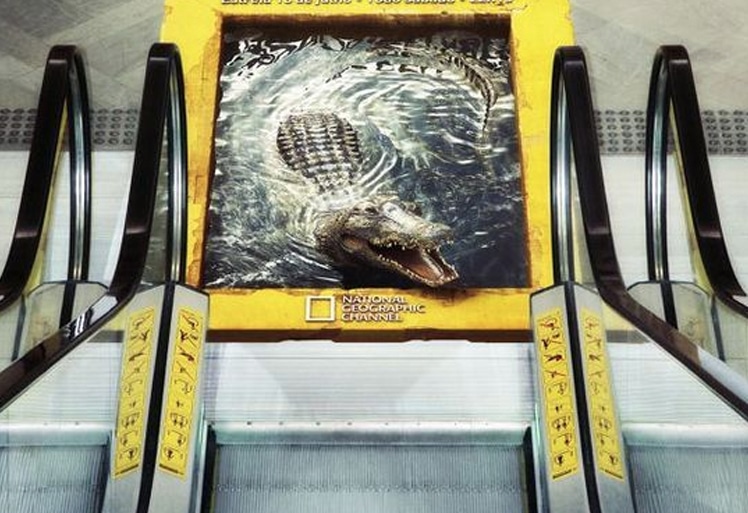
When you’re going down an escalator, you’re looking at the floor below you. This 3D National Geographic ad works because it looks like you’re headed right into a pool of crocodiles in the Brazilian rainforest.
Interactive components.
Interactive components aren’t 100% necessary for a guerrilla campaign. But they certainly do help! People love to interact and be part of the message. The more you can give audiences an experience, the more engaged they will feel, and the more likely it is that they’ll remember your brand.
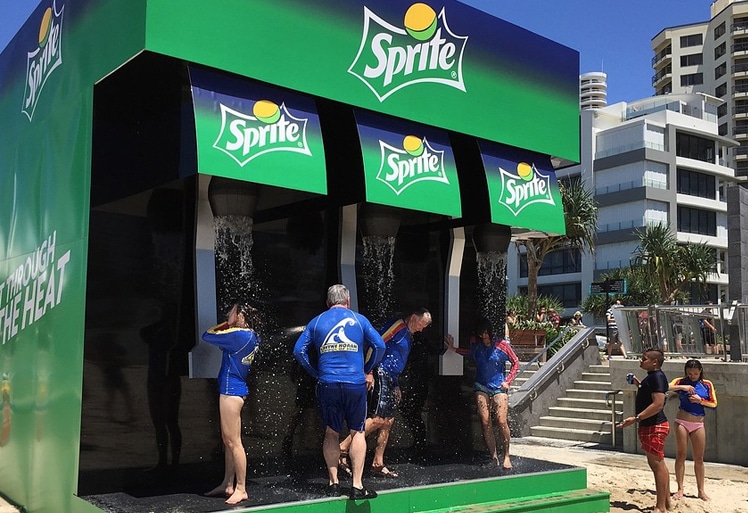
Sprite took a creative, interactive approach with this guerrilla campaign that transformed outdoor showers. Beachgoers rinsed off salt and sand with a shower that looked like a giant soda machine.
Shareable on social media.
If a brand can catch someone emotionally, odds are they’ll share their experience on social media. So if they’ve succeeded in doing all of the above, they often generate some social media buzz.
It’s true that some guerrilla marketing is more photographable and recordable than others, though. Who could resist a picture with the Wall Street Bull wearing Gold Toe’s massive underwear during their 2010 campaign?
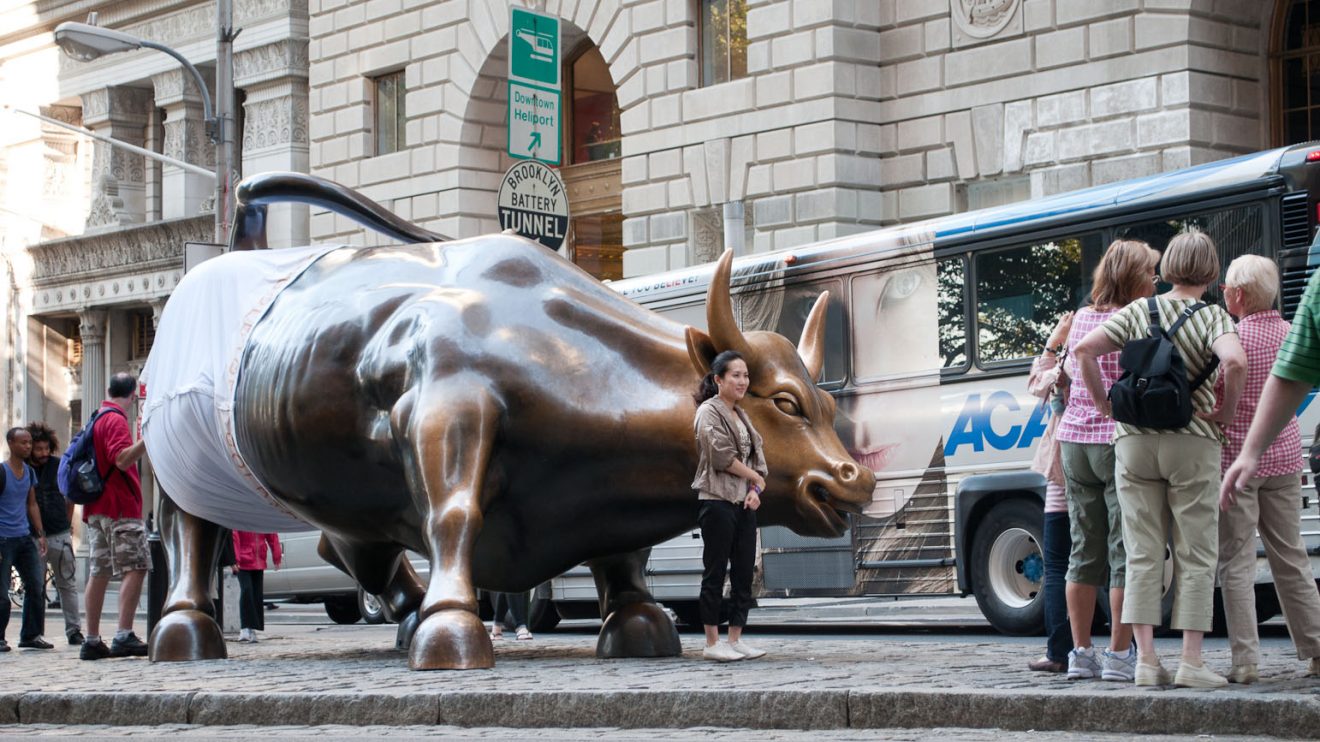
A massive bull on Wall Street makes one eye-catching underwear model.
Arkaden Mall’s “Get Fabulous” campaign also begged to be photographed and shared, allowing people to “try on on” outfits from their stores using mirrors built into shells that normally held pavement ads.
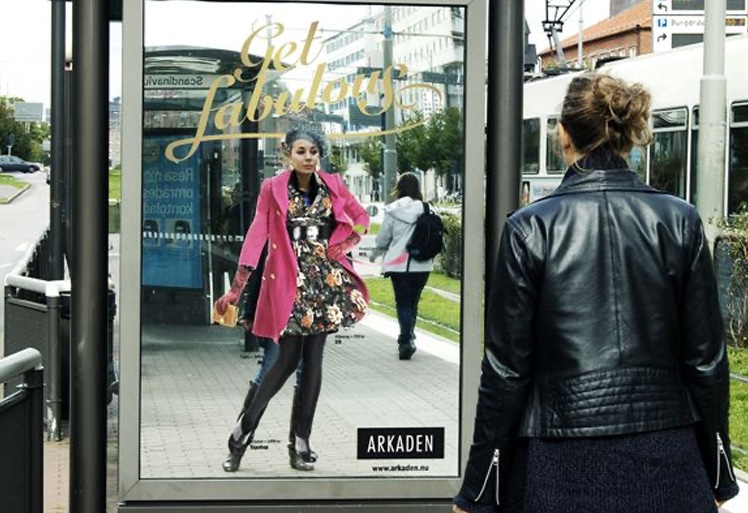
“Dressing rooms” in the streets got customers envisioning themselves in great fashion.
Moves your brand forward
Maybe the most important feature of an effective guerrilla campaign, though, is that it’s part of a larger marketing strategy. Guerrilla marketing gets attention, but then what?
The most successful marketers know that once you’ve gained your audience’s interest, there must be a plan in place for taking all those hot leads and turning them into customers and loyal fans. When companies have a guerrilla campaign that fits into their larger strategy, then they’ve captured some real marketing firepower.
We hope you’ve enjoyed some of these examples of impactful guerrilla marketing, and that you feel inspired to keep breaking the mold!
Until next time,
-B. Iconic
